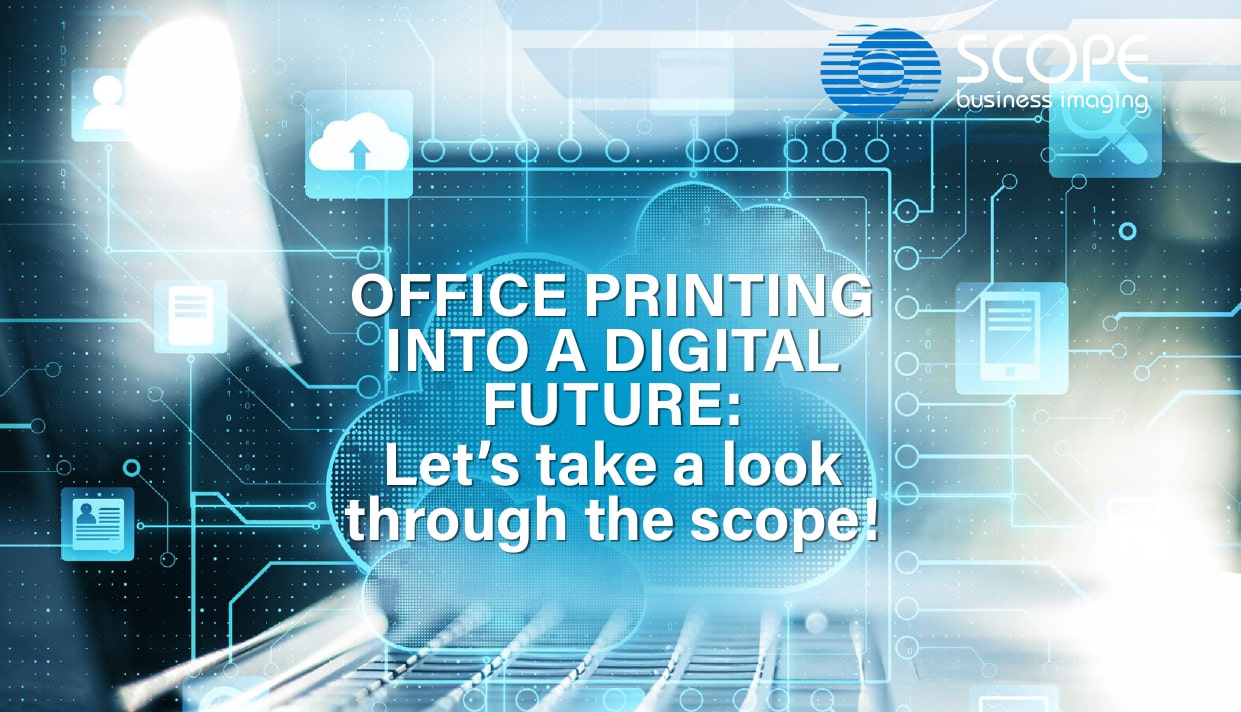You have no items in your shopping cart.
Unique offer no lock in contract Start here.
Scopebi
29
Aug

Digitisation, convergence and the ubiquitous cloud has drastically changed the way we work.
So too has the shift to make the modern workplace more user friendly and less rigid; more flexible, accommodating and attractive for current and prospective employees.
And with technological change comes the need for businesses to adapt and embrace new methods and models – or risk being left behind with competitive disadvantages, in-house and in the marketplace.
Over the past few years especially, hybridised and remote employment arrangements have become commonplace, where staff can work from home some – or all – of the working week.
One of the key enablers of this new paradigm is digital imaging technology, that is printing and scanning technology that enable documents to be digitised, shared and stored – both in the physical form and in ‘bits and bytes’ from one point to another, across the internet in an instant.
Imaging technology not only facilitates productivity and collaboration in the mobile workforce, but offers enhanced security and encryptions in an increasingly hackable digital world.
It can also reduce in-house infrastructure cost with less hardware devices on the local network that need to be periodically maintained, serviced and upgraded.
While no one can truly predict the future – and this becomes truer the farther we look – we can make intelligent inferences based on current trends and technological pathways.
Scope Business Imaging has been leading imaging solutions since its inception in 1986, growing to be WA’s largest copier/printer supplier in nearly four decades of local service.
With our proven track record of expertise and knowledge of fast- moving trends that shape the future, we have identified four key areas that will continue to evolve and facilitate businesses to adopt complicated printing technologies to streamline and secure their day-to-day process into the 2030’s and beyond ...

1. Cloud managed print solutions (MPS)
Put simply, cloud based MPS is increasingly necessary for a functional hybrid and remote employees. Easily upscaled or downscaled to accommodate changing needs and user numbers, cloud based MPS as a virtual server also reduces physical hardware requirements that require tech support and maintenance.
2. Digital technology integration
While the ‘paperless office’ is something to aspire to, in many industries this is simply not possible. Nothing truly beats the permanence, integrity and incorruptible transportability of print and paper. The future presents a further convergence and interchangeability of physical print and digital files – instead of replacing print, digital technology will support, improve and innovate workflow across and between paper and digital formats.
3. Printer security
The multifunction copier/scanner/ printer machine is often the most overlooked part of a secure network in the office. This effectively leaves an ‘open window’ for cyber criminals. Print control solutions will continue to ensure the highest possible protection for any and all confidential, private or sensitive documentation. As the complexity of hacker methods and malicious codes intensifies, MPS providers will play an increasingly integral part in digital strategy.




← Older Post Newer Post →